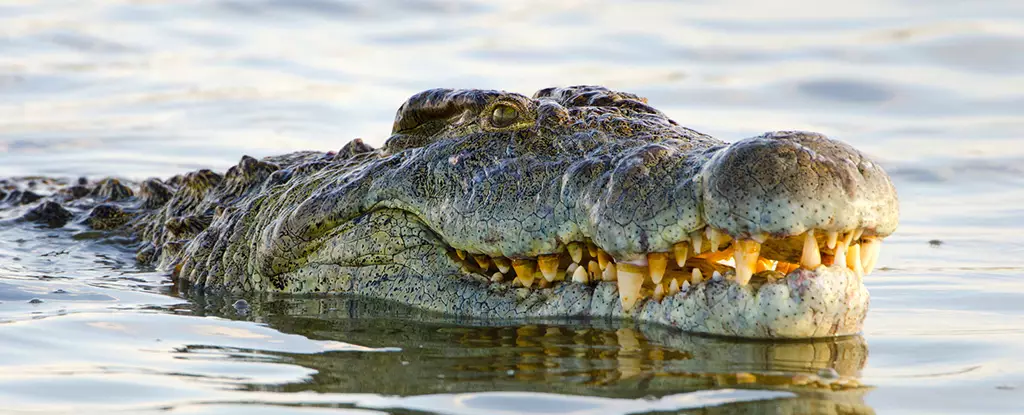Crocodiles have long captivated human imagination with their formidable appearance and ancient lineage, reputed for their wide, toothy smiles that contrast with their intense predatory nature. Recent research from the University of Geneva sheds light on the mechanics behind the distinct patterns of their head scales, revealing the underlying biological processes that create this iconic reptilian feature. Unlike many animals where external structures develop from similar biological principles, crocodiles present a fascinating deviation that indicates a complex interplay of growth, texture, and mechanical processes during embryonic development.
A study led by biologist Michel Milinkovitch and his team at the Laboratory of Artificial and Natural Evolution (LANE) uncovered the unique formation of crocodile head scales. Traditionally, biological structures such as hair, feathers, and scales have been explained through the lens of Turing patterns—mathematical models that describe how chemical substances interact during development to produce spatial structures. However, crocodiles challenge this paradigm. Instead of following the conventional developmental pathways, their scales emerge from a more mechanical process marked by compressive instabilities.
The initial stage of a crocodile’s development portrays a smooth where the jaw gradually creases due to rapid epidermal growth. As the embryo develops, these creases coalesce and morph into a distinctive array of polygonal scales, particularly pronounced on the upper jaw. This intricate design is not merely aesthetic; it may impart various functional advantages, including enhanced hydrodynamics or protection.
To explore the origins of this peculiar pattern, researchers conducted experiments wherein they injected Nile crocodile eggs with epidermal growth factor (EGF), a protein that boosts skin rigidity and accelerates growth. The resulting embryos displayed an exaggerated pattern of head scales, marked by complex labyrinthine folds that differ from the usual scale patterns seen in unaltered specimens. Unpacking these modifications provides a glimpse into the biological machinery that shapes these formidable reptiles.
The experiments revealed that the imbalance in the growth rates of the skin layer compared to the underlying bone contributes to the formation of these unique patterns. Unlike the common concerns regarding human growth spurts, where the skin stretches to accommodate rapidly growing bodies, crocodiles exhibit an opposite scenario where their skin outpaces the skeletal development beneath it. Consequently, they develop folds and wrinkles that resemble the skin of a shar pei puppy, instead of the stretch marks that humans encounter.
The Role of Evolutionary Adaptation
These findings not only illuminate the physical characteristics of crocodiles but also suggest that the variation in head-scale patterns among different crocodilian species could be the result of evolutionary adaptations to their specific ecological niches. As they evolved, these reptiles may have undergone selective pressures favoring distinct characteristics that enhanced their survival in diverse environments.
Understanding the growth mechanics behind the crocodile’s signature smile offers more than a fascination with the animal itself; it illuminates the broader evolutionary narrative of reptiles as they adapt and thrive in ever-changing ecosystems. The study accentuates the intricate relationship between structure and function in biology and invites further inquiry into how other species adapt their physical forms through similar or entirely distinct processes.
The crocodile’s smile is not simply a quirk of nature’s design but is intertwined with the intricate mechanics of biological growth and evolution. This newfound knowledge inspires a reevaluation of how we understand animal morphology and the diverse adaptations that have emerged across the animal kingdom. As researchers delve deeper into the physiology of these ancient reptiles, we come closer to comprehending the broader implications of evolutionary biology in shaping life on Earth. The study of the crocodile’s scales serves as a prime example of the wonders of evolution at work, compelling us to appreciate the complexity embedded in the simplest of anatomical features.


Leave a Reply